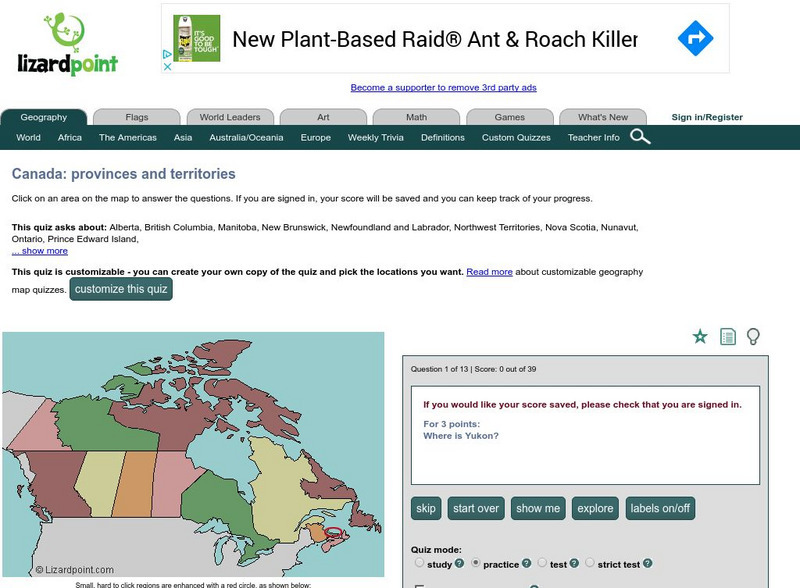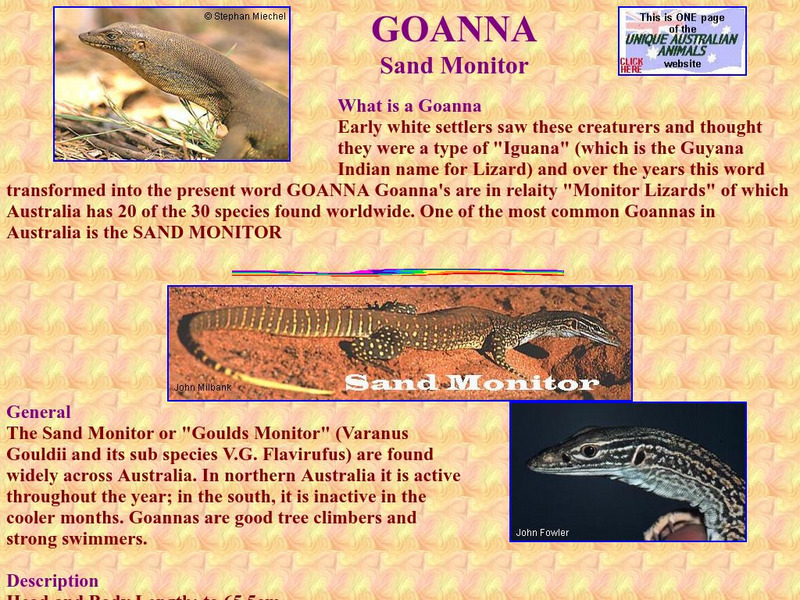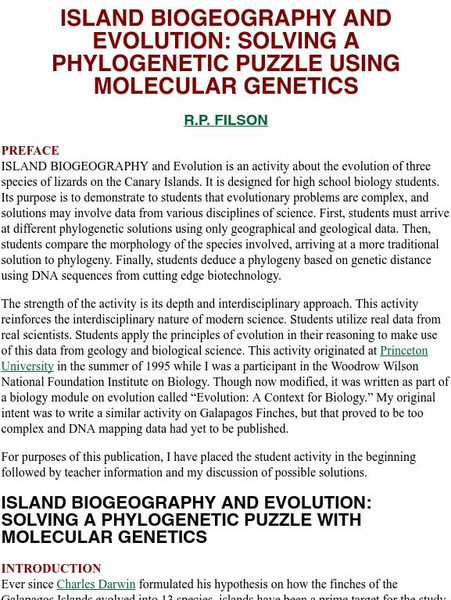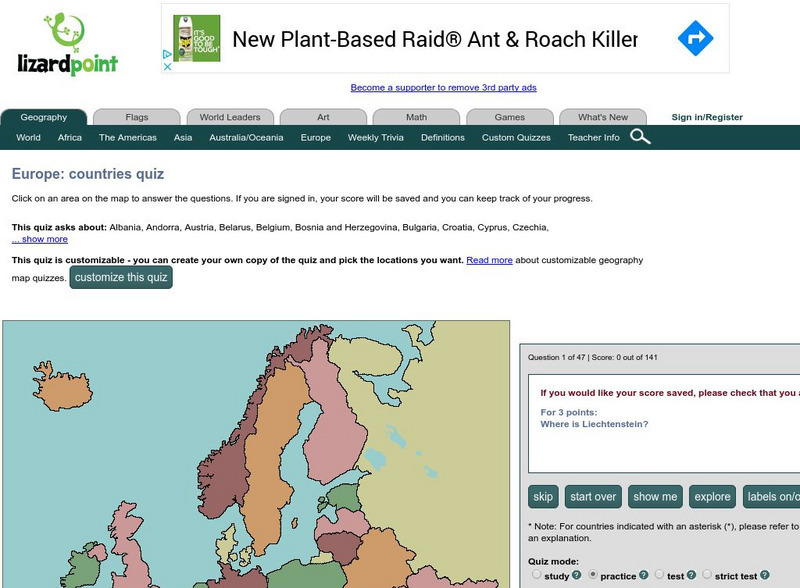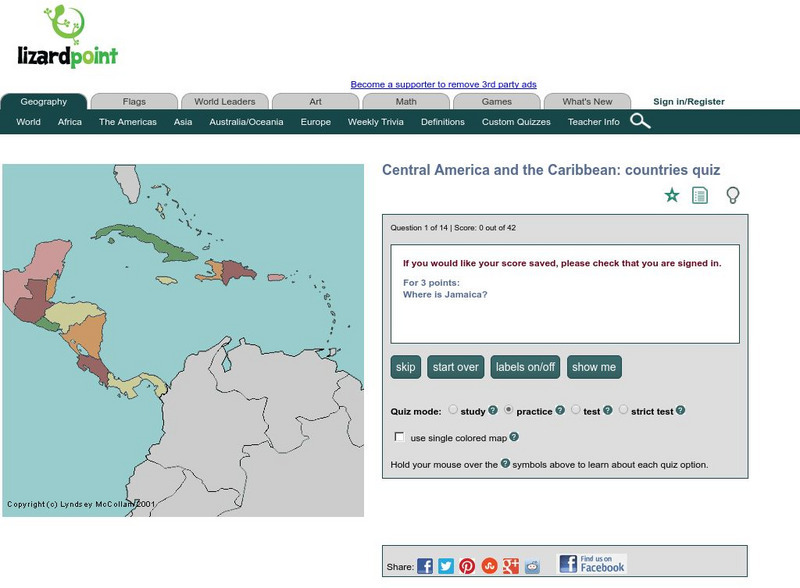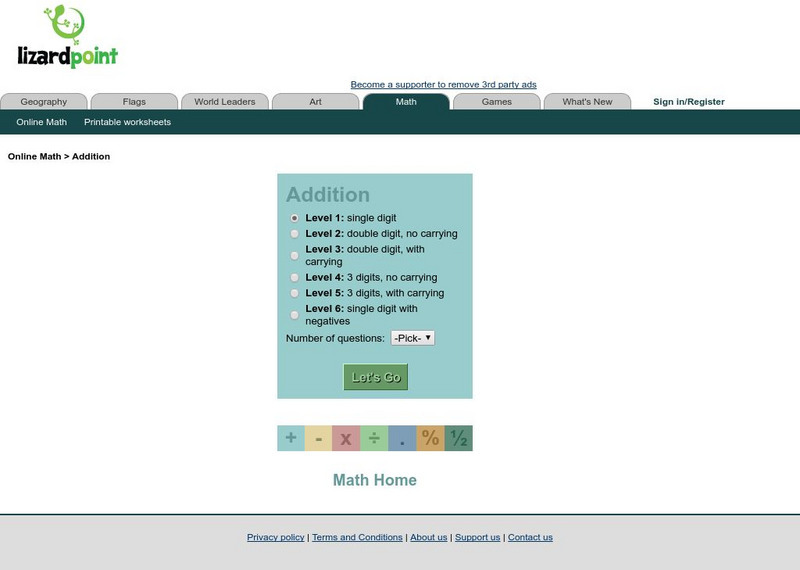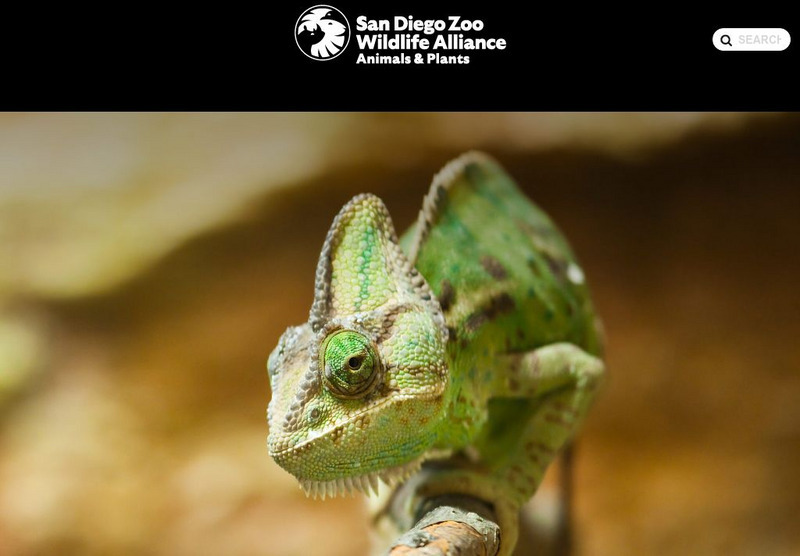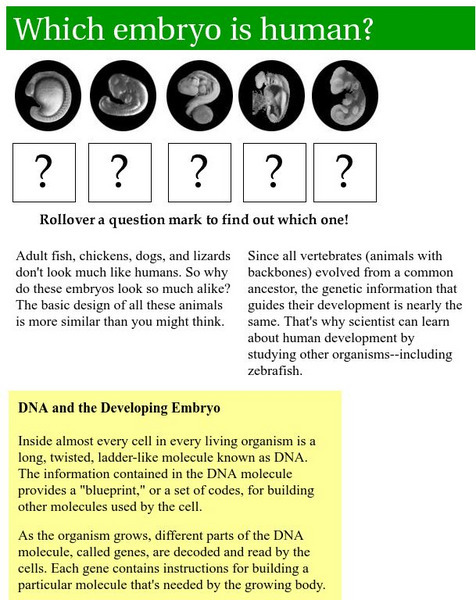Hi, what do you want to do?
Lizard Point Quizzes
Lizard Point: Test Your Geography Knowledge Canada
Use this site to test your students, and your knowledge regarding the location of the provinces and territories of Canada.
Pittsburgh Zoo & PPG Aquarium
Pittsburgh Zoo: Komodo Dragon
The Komodo dragon is a venomous species of lizard and the largest living species of lizard. Use this resource to discover other fascinating facts about this lethal predator.
Biology Pages
Kimball's Biology Pages: Vertebrate Kidneys
Everything you've ever wanted to know about vertebrate kidneys. Modules include Freshwater Vertebrates, Amphibians, Lizards and Snakes, Birds, Mammals, Marine Fishes. Resources can be used as classroom notes or supplemental materials.
Curated OER
The Lava Lizard Is One of My Dad's Favorites
Enjoy the adventure of the Galapagos Islands from the point of view of six-year-old "Little Miss Chievous". She tells about the yacht her family took to the islands and shares her pictures with descriptions.
Unique Australian Animals
Unique Australian Animals: Goanna
This webpage from Unique Australian Animals offers a small description of the Goanna (Sand Monitor).
PBS
Pbs Learning Media: Function of Fever
Fevers are a sign of infection, but they may also be part of the cure. This drawing illustrates Matthew Kluger's lizard study, which supports the notion that fever can be beneficial.
University of California
Ucmp: Island Biogeography and Evolution
This is a lesson designed by a biology teacher. In it, students use maps and evidence of island age, molecular genetics, morphology, and distance apart to determine how the islands came to be occupied by different species of lizards. It...
Lizard Point Quizzes
Lizard Point Consulting: Africa
Use this resource to take the challenge to see how well you can identify the countries of Africa.
Lizard Point Quizzes
Lizard Point: Test Your Geography Knowledge: Europe
This resource is a way to test yourself, and your students, on their geography knowledge of Europe.
Lizard Point Quizzes
Lizard Point: The Central America Quiz
Take this 14 question geography quiz to test your knowledge of Central America.
Lizard Point Quizzes
Lizard Point: The Australia Quiz
An eight-question geography quiz over Australia.
Lizard Point Quizzes
Lizard Point: Addition Practice
Practice several different levels of difficulty of addition problems from single digit all the way up to 3 digit with regrouping. You can also choose single digit addition with negative numbers. When you are finished you can print your...
Encyclopedia of Earth
Encyclopedia of Earth: Adaptations of Desert Amphibians and Reptiles
The evolution of amphibians from prehistoric days is described, and the challenges they face when living in a desert environment, of which the ability to reproduce is the greatest. How they manage to survive in a desert is explained in...
San Diego Zoo Global
San Diego Zoo: Reptiles
What is a reptile? Use this resource to understand the basic facts of all reptiles and click to detailed information on many specific types.
San Diego Zoo Global
San Diego Zoo: Chameleon
Read all about the chameleon. The "Quick Facts" tells you information in a nutshell, and the main text explains how the chameleon changes colors. You can even hear the sound of a chameleon. An interesting resource.
BBC
Bbc Nature: Prehistoric Life: Tyrannosaurus Rex
Explore the exciting world of the killer dinosaur, Tyrannosaurus Rex, by learning about its behaviors, geological time periods, and classification through descriptions, videos, photos, news, and external links.
Other
Dr. Seward's Gila Monster Web Site: Gila Monsters
In addition to covering morphology, range, unique adaptations, activity patterns food & metabolism, and intraspecific interactions, this this site examines several interesting superstitions and fables related to the gila monster.
Environmental Education for Kids
Eek!: Species With Status: Endangered
Endangered species are animals, plants or other life forms facing a high risk of extinction in the wild. Learn about some endangered species in Wisconsin.
Saint Louis Zoo
Saint Louis Zoo: Banded Gila Monster
Discover fun facts and learn about the habitat, breeding, diet, conservation status, and appearance of the Gila monster.
Writing Fix
Writing Fix: Your Glorious Gene Pool
Students read the books like I Am the Dog. I Am the Cat by Donald Hall and Joyful Noise by Paul Fleischman and read the lyrics while listening to the song "Shallow End of the Gene Pool" by the Austin Lounge Lizards. Then students learn...
Exploratorium
Exploratorium: Which Embryo Is Human?
Scientists can use the research they gather from studying embryos of dogs, lizards, fish, and chickens to better understand human embryos. How is this possible? You'll find out with this Exploratorium resource.
Other
Kingsnake: Vipera Aspis
Distributed throughout Europe, the Vipera aspis, is a venomous snake that preys mostly on rodents and lizards. Distribution map of Italy, pictures, and dimensions are included.
Children's Museum
Dinosphere: Dino Profiles: Meet the Gorgosaur
What do fossils tell us about the Gorgosaurus and how it compares to T. rex? Learn about the size and diet of this "fearsome lizard", and read about the various injuries of Dinosphere's Gorgosaur fossil. Also, "Gorgosaur 360" lets you...
Other
Shark Friends: Virtual Shark Dive
Swim along with Herman your lizard tour guide as he leads you through the treacherous shark infested waters within your computer. Learn about the various species of sharks such as the Megamouth, Hammerhead, Angel and many more!
Other popular searches
- New Zealand Lizards
- Lizards Adaptations
- Lizards for Lunch
- New Zeal and Lizards
- Leaping Lizards
- Flying Lizards
- Lizards and Snakes
- Food Chain/ Lizards
- Lizards Snakes
- Northern Alligator Lizards
- Lizards of Mississippi
- Food Chains/ Lizards





